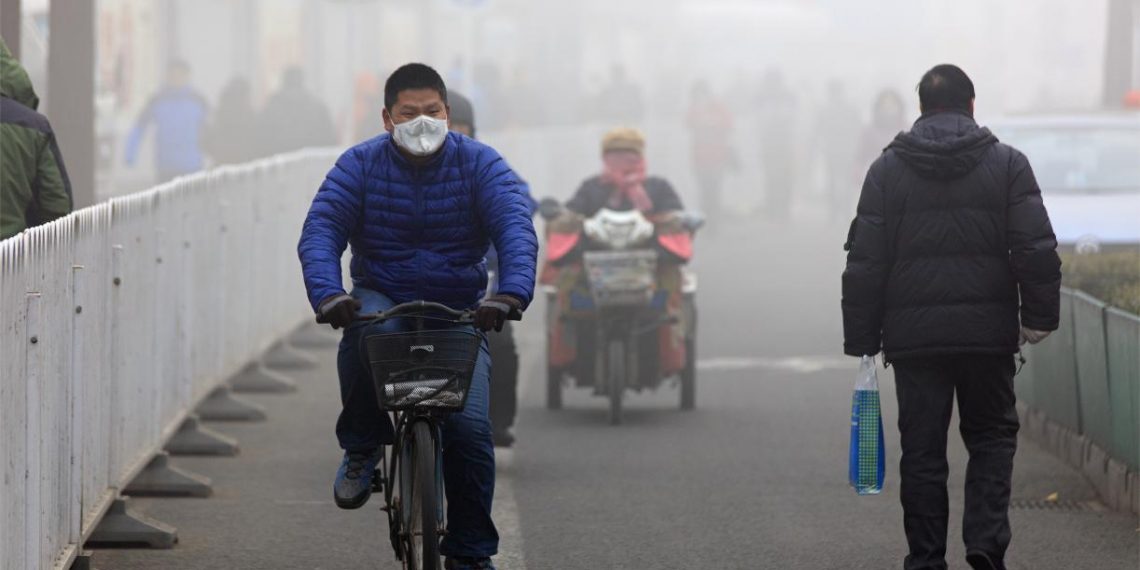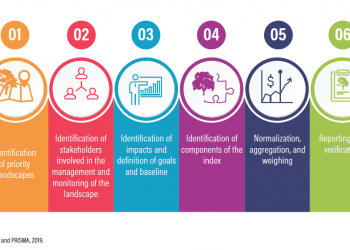The Intergovernmental Panel on Climate Changes’ (IPCC) Sixth Assessment Report (AR6) has delivered another wakeup call about the need for drastic cuts to greenhouse emissions by 2035 to avoid the most devastating impacts of climate change to human well-being and ecosystems. Carbon dioxide (CO2) may be the most well-known greenhouse gas (GHG), but others, known as non-CO2 or short-lived climate pollutants, also have a critical role to play in keeping the Paris Agreement’s 1.5 degrees C (2.7 degrees F) temperature goal within reach, while also improving air quality and protecting health.
Short-lived climate pollutants — methane, black carbon and hydrofluorocarbons (HFCs), which are also sometimes known as “super pollutants” — remain in the atmosphere for less time than carbon dioxide but have a potent impact on near-term global warming. For example, methane has more than 80 times the warming power of CO2 in its first 20 years in the atmosphere. And about 45% of today’s net global warming is driven by methane emissions from human activities. Moreover, methane is also a precursor for another powerful driver of climate change: tropospheric (ground-level) ozone.
The IPCC report — the conclusion of a series of assessments written by hundreds of scientists — finds that even with rigorous C02 reduction strategies, the world faces a more than 50% chance of exceeding the 1.5 degree C limit if non-CO2 pollutants are not significantly reduced.
Reaching net-zero emissions by mid-century requires deep cuts in short-lived climate pollutants, including methane, which the IPCC said must be cut 34% below 2019 levels by 2030. Since these pollutants are fast acting in causing climate change despite their short lifespan, action to significantly reduce short-lived climate pollutants can also be the fastest way to slow temperature rise.
Since the launch of the Global Methane Pledge at COP26 in 2021, the world is now more aware of the threat of super pollutants. The pledge — a partnership between 150 countries — commits to collectively reduce global methane emissions by at least 30% below 2020 levels by 2030. But without efforts toward deep reduction cuts, methane emissions are currently on track to increase 5% to 16% above 2020 levels by 2030.
Here are three reasons why governments should quickly scale plans to rapidly reduce short-lived climate pollutants:
1) To Improve Climate and Food Security
Food systems and agriculture are highly vulnerable to climate change, while at the same time being the largest source of short-lived climate pollutants, primarily methane. Methane emissions are a major source of ozone in the lower atmosphere — a toxic pollutant not only to animals and humans but that also inhibits photosynthesis in plants and reduces plant biomass and crop yields. Methane has resulted in ozone related yield losses of 16% for soybean crops, 12% for wheat crops, 5% for corn crops and 4% for rice crops — roughly equivalent to 110 million tons annually.
Reducing methane emissions to the levels spelled out in the Global Methane Pledge will require countries to revolutionize food production and improve agricultural methods that are tailored to local populations. This can be achieved by improving feed quality to help boost ruminant livestock productivity and efficiency per kilogram of meat and milk; developing and introducing feed additives for livestock (for example, appropriately utilizing seaweeds that reduce emissions from enteric fermentation in cattle); planting lower methane rice grains; and placing a greater emphasis on plant-based and sea-based proteins.
When exploring these opportunities, it is important that countries incorporate equity into their plans so that vulnerable populations and women are considered and they receive assistance for escaping poverty, developing sustainable livelihoods, and limiting hunger.
2) To Protect Human Health
Climate change and air pollution share many of the same sources and are therefore inextricably linked. Each year, roughly 7 million people die prematurely from ailments such as asthma, respiratory diseases, and heart disease, after being exposed to dangerous levels of household and ambient air pollution. Increased emissions of black carbon and other forms of particulate matter, as well as ground-level ozone and other pollutants, are largely responsible for poor air quality, which has become the largest environmental risk to human health, especially in low- and middle-income countries.
The 2023 AR6 IPCC report concludes that air pollution control measures combined with strong and sustained methane emission reductions will likely result in less global warming. It also calculates the economic benefits of reduced illness and disease from air quality improvement to be equal in magnitude to the mitigation costs, and potentially even larger.
The good news is that solutions to reduce short-lived climate pollutants are readily available and bring cost-effective wins for climate and development. A new report on sustainable development in Africa demonstrates how a sustainable path forward can be created by reducing short-lived climate pollutants in key sectors, while ensuring the most vulnerable communities benefit from some of these solutions.
Plugging up leaks from pipelines and oil and gas extraction, reducing food waste, capturing emission from landfills and using less fertilizer in farming are some of the solutions on hand to reduce methane emissions — solutions that could achieve a large portion of the reductions needed to meet the Global Methane Pledge. Adopting more efficient heating and cooking methods and switching to cleaner fuels and electric transport could go a long way to reducing black carbon pollution, and HFCs can be reduced by adopting more efficient cooling systems.
3) To Keep Climate Goals Possible
Current efforts to limit warming to 1.5 degrees C (2.7 degrees F) are well off track, yet fast action on short-lived climate pollutants can avoid more than half a degree of warming by 2050. With the IPCC AR6 report already highlighting that concentrations of short-lived climate pollutants, particularly methane, were at their highest rates in 2019, compared to the past 800,000 years, countries can demonstrate their commitment to the Global Methane Pledge by communicating their plans to reduce such pollutants by 2030 and beyond.
The latest WRI Research shows countries have slowly started to provide more transparent and substantive details on their intention to reducing short-lived climate pollutants in the climate commitments they’ve submitted under the Paris Agreement. These commitments, also known as nationally determined commitments (NDCs), should be aligned with the Global Methane Pledge already signed by 150 countries.
The signatories to the pledge represent roughly two-thirds of global GDP, more than 50% of global anthropogenic (or human-induced) methane and feature 14 of the top 20 largest methane emitters, including Argentina, Australia, Bangladesh, Brazil, Canada, Colombia, Ethiopia, Indonesia, Mexico, Nigeria, Pakistan, United States, Uzbekistan, and Vietnam.
Additional details have also been reflected in countries’ NDCs. For example: Montenegro communicated its intention to freeze HFC consumption in 2024; Cameroon intends for all major cities to have landfills with 70% methane capture facilities in place by 2035; and Benin in West Africa has provided a menu of measures in the energy sector that will lead to a 14% reduction in black carbon emissions by 2030.
Meanwhile, six countries —Canada, Finland, Norway, Sweden, the U.S. and Vietnam — and the European Union have published Methane Action Plans, which highlight sector-specific national strategies, regulatory instruments and expected future policy interventions to reduce short-lived climate pollutants from waste, energy and agricultural sectors.
With support from implementation agencies such as the Climate and Clean Air Coalition, 22 additional countries are also working to showcase their commitment to methane abatement in national action plans.
How Countries Can Obtain Financial Support
As an added support to local policy, various financial opportunities also exist for countries to achieve reductions, particularly methane from the three key sectors:
In addition, here are some recommendations for strengthening national policies:
- Governments can create and enforce laws that make short-lived climate pollutant emissions measurement and reductions mandatory.
- Countries should provide a greater level of specificity in their NDCs on what actions, policies and measures are going to be implemented to achieve the 30% collective reductions identified by the Global Methane Pledge.
- Governments should begin to set sector-specific phase down measures with target dates for significant abatement or complete phase out (where applicable) of SLCPs at the source.
Fast and immediate action on short-lived climate pollutants offer a win-win with benefits that include improving global food security, boosting agricultural productivity, strengthening economic development and innovation and lowering human health vulnerabilities. Simultaneously, taking concerted action offers a critical response to the goals of the Paris Agreement and the needs of the most vulnerable communities around the world.



